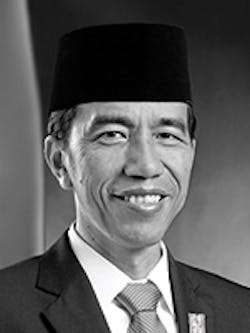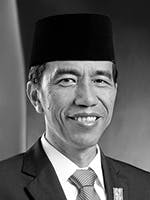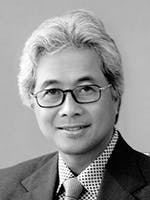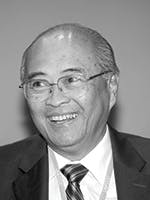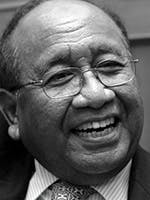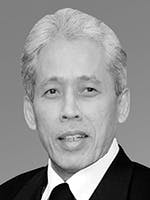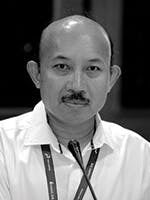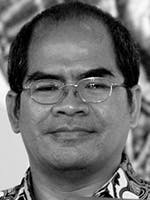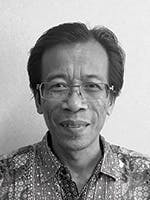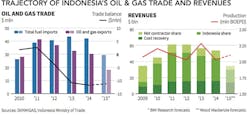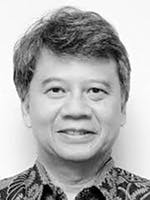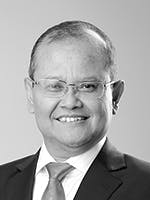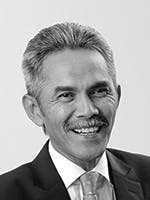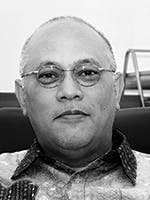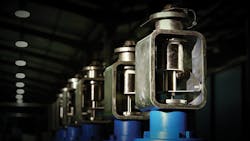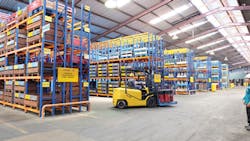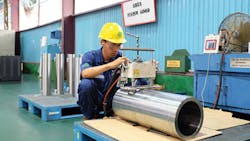Indonesia: Striving for a comeback
THIS SPONSORED SUPPLEMENT WAS PRODUCED BY FOCUS REPORTS.
Report Publisher: Mariuca Georgescu
Project Director: Louis Haynes
Project Coordinators: Roxane Höck, Simona Simeonova
Editorial Coordinator: Jannes Peemoeller
For exclusive interviews and more info, please log onto www.energyboardroom.com or write to [email protected]
As ASEAN's largest economy and the world's 4th most populous nation comes to terms with the reality that it is fast becoming a net energy importer, Indonesians still revere a local oil and gas industry that once boasted heavyweight exports and gained international acclaim for pioneering LNG and the iconic production sharing contract model. "Hydrocarbons prowess remains very much part of our national psyche and we should rightly take pride in our illustrious heritage, but times are changing and we are now compelled to explore alternative pathways to power a high performance economy," reflects Dr Kunturo Mangkusubroto, formerly head of the presidential delivery unit. Indeed, with national energy demand surging on average 7 percent annually, but oil and gas production firmly on a downward curve, many are left wondering if the Indonesian hydrocarbons industry can ever truly rediscover the glory days of old.
Nevertheless, in the words of Pertamina CEO Dwi Soetjipto, oil and gas still remains the "biggest game in town" contributing some USD28.5 billion in 2015 in tax and royalties to the treasury and providing direct employment for over 300,000. Today the country ranks 20th out of world oil producers possessing roughly 1.1 percent of total global production, while for gas, it attains 10th largest producer status worldwide, second only to China in Asia Pacific. According to the latest Indonesian Petroleum Association (IPA) figures, the country's remaining proven, probable and possible (P3) oil reserves stand at a considerable 7,375 million stock tank barrels (MMSTB), while P3 gas reserves amount to a mighty 150 trillion cubic feet (TCF).
Unsurprisingly, figures like these combined with the magnitude of national demand, charm many an investor. Asia's so-called "third giant" is, in the words of CPTDC chief representative, Jeffrey Chen Wenhai, "simply too big to ignore." "When you consider the local demographics of 255.4 million people and sheer breadth of the market, you're likely staring at a future economic powerhouse that will soon be enjoying some of the fastest growth rates anywhere. It's therefore vitally important to be maintaining a local presence," he assesses.
Strategy consultants tend to agree. "Clearly, with its young population and expanding middle class, it's only going to be a matter of time before Indonesia comes of age and matures into an economic high-flier. Three core ingredients are in convergence: the natural resources are here, the people are here and the infrastructure is finally coming. Plenty of serious players have entered the energy market cognizant of these facts and angling for a slice of the action," remarks Sacha Winzenried, leader of the energy, mining and utilities practice at PwC.
Other industry practitioners identify a multitude of additional attributes. "It's a magnificent market serving up really unique opportunities for smaller independents like us to cut our teeth on and earn or spurs," enthuses Kim Morrison, CEO of Lion Energy. "There's a great deal flow with plenty of options all round: we're talking about a country possessing 5 of the most prolific 15 onshore basins in the region, great swathes of virgin territory in the east where acreage can be picked up for peanuts and a large unconventionals upside," he elaborates.
"Asia Pacific is actually sitting on the world's most unconventional reserves and Indonesia lies pretty much close to the heart of that," concurs ExxonMobil's president director, Jon Gibbs, "so there's massive scope for any oil and gas sector firm, whether big or small, as long as you possess the technical capacity and audacity to properly leverage that."
Looking beyond the land of superlatives
Yet, for all the super-size numbers, the Indonesian oil and gas sector has spent much of the past decade languishing in the doldrums with productivity, reserve replacement and exploration tempo all experiencing seemingly terminal declines. According to the national upstream regulator's very own figures, oil and gas exports tumbled last year to USD 28.75 billion saddling the state with a hydrocarbons trade balance deficit of a whopping USD 11.84 billion. Meanwhile actual oil production attained only 794,000 bpd missing the government's modest lifting target of 818,000 bpd when only a couple of decades ago production rates soaring upwards of 1.6 million bpd had been very much the norm. Exploration meanwhile fared little better with the oil reserve replacement ratio (RRR) sliding as low as 40 percent. To cap it all off, IPA statistics for 2015 recorded gestation times for bringing reserves to commercialization as lengthening to a full 8 years in stark contrast to the international average of only 2 years.
"At a first glance, Indonesia is genuinely blessed with bountiful energy and mineral deposits, and even a nice geographic positioning right next to some very energy thirsty markets, not to mention the rampant domestic demand. However significant constraints lurk in the background that loom larger than the geological risks and cast a dark shadow over your investment decisions," warns Medco's general manager, Roberto Lorato. "Sluggish bureaucracy, legal uncertainty and an onerous fiscal regime can create a pretty unappealing risk-to-reward ratio and conspire to make this market much tougher than it really should be," he laments.
"Sadly sometimes the local hydrocarbons market does end up being rather like the woman you thought was beautiful the night before, but who actually turns out to be rather ugly in the morning," jokes BritCham's executive director Chris Wren. "Investors must refrain from rushing headlong in without properly doing their homework and calculating the financials because this is the sort of regime whereby a company can be obliged to pay taxes even before tuning over a profit. Returns can look tantalizing, but market distortions do muddy the water so plan your entry strategy meticulously, just as you might when engaging with an India or a China," he counsels.
Tearing down walls
That's not to say that Indonesia is completely out of the hydrocarbons game yet. Given its strategic location at the core of booming, energy bulimic Asian markets, the country retains a residual capacity to export locally. The archipelago meanwhile straddles the Strait of Malacca, one of the world's major oil transit chokepoints, and its Batam special economic zone SEZ displays growing potential as a regional transshipment hub. Furthermore, the pressing need to feed its very own turbo economy creates the strategic imperative for Indonesia to finally get its act together and start properly capitalizing on its vast natural resource endowments.
"The obstacles we face are entirely of our own making. It's not as if we've run out of hydrocarbons or that we're dealing with insurmountable technical sub-surface issues and are forced to sit around waiting for breakthrough technologies. The cause of all this inaction in the upstream segment is squarely down to an illogical fiscal, administrative and regulatory landscape that is not sufficiently supportive of investors," clarifies Andang Bachitar, chairman of a recently assembled National Committee for Exploration dedicated to finding ways to incentivize E&P activity and increase reserve replacement ratios to 70 percent. "We need the political guts to clear away all these barriers, unstop the bottlenecks and open the door wide to business once more," he assesses.
Luckily Indonesia's popular and freshly elected president, Joko "Jokowi" Widodo, an energetic, media-astute former furniture salesman seems intent on turning the page on an decades of inaction and timidity on the part of the former administration and has already placed reform of the energy sector high up on his political agenda.
"We've already undergone a sea-change in how oil and gas strategy is formulated with the nation's resource wealth now treated in a much more enlightened manner by being explicitly linked to economic development. The country's hydrocarbons are today seen less as commodities to be traded and more as a dynamo to national economic prosperity," explains Ari Soemarno, former CEO of Pertamina and an informal advisor to the presidency.
To that effect, a welter of reforms have been enacted geared towards creating the right sort of enabling conditions to restore investor confidence and reinvigorate foreign and local upstream investment. "A new law will determine the allocation of the proceeds from oil and gas production by elucidating the 'state take' of the profits under a range of different scenarios. Today's government understands that some oil and gas fields such as deep water and unconventionals are more complex and risky to develop than others," explains Teguh Pamuji, secretary general at the Ministry of Energy.
Alongside that attempt to overhaul the fiscal regime, measures are simultaneously being enacted to simplify, streamline and accelerate the licensing and administrative process. "To date we have reduced the number of energy sector specific permits from 104 to 42 and my objective is actually to whittle that figure down to 20 over time, discloses, Wiratmaja Puja, director general of D-G Migas, the policy formulation arm of the Energy Ministry. "Moreover, in what I consider to be a pretty radical step, the Ministry is now delegating the permit issuance for many of these remaining licenses to the Investment Coordinating Board (BKPM) so that PSC holders will, in the future be dealing with a one-stop, single-window service."
"Our priority is to unleash the oil and gas companies so that they can concentrate on their bread and butter task of hunting for and extracting hydrocarbons," declares Amien Sunaryadi, chairman of the upstream regulator, SKK Migas. "Beyond deregulation and the mainstreaming of efficiency, we are simultaneously repositioning ourselves much more as an enabler and support to the industry," he divulges.
Making fit for fifty
Structural change is also afoot with the Indonesian market seemingly positioned right at the vanguard of the many dramatic developments sweeping the industry as energy companies scramble to make themselves 'fit for fifty" in the wake of a global oil price collapse.
"We all enjoyed a good run from this past 4 year super-cycle of heady prices, but now everyone is having to return to the drawing board and rethink their business models because there's going to be no place for the over-designed and over-engineered projects of yesteryear in the new epoch that's unfolding and being played out right here across the archipelago," declares Andrew Law, general manager of Weatherford. "Innovation savvy service suppliers like us are going to be playing a big part in this new drive for efficiency," he predicts.
Achmad Zakky Ridwan, president director of the certification and inspection society DNV-GL also identifies definite shifts in corporate strategy with "standardization fast becoming the new innovation" for many businesses. "There are many quick wins to be realized by importing solutions that have proven highly effective elsewhere...many of the infrastructure projects our clients are undertaking are capex intensive so they certainly don't want to be caught reinventing the wheel unnecessarily," he observes. "Furthermore, in this new climate of stretched budgets, customers are also determined to leverage as many synergies as possible so are increasingly demanding bundles of integrated services which is actually positive news for a firm with our broad sweep of capabilities."
Many local firms are equally keen to jump on the bandwagon and respond to the widespread appeals for 'optimization.' "This actually represents a momentous window of opportunity for the taking," exclaims Fanny Herawati, founder of PT. Navita Origo Solutions who is busy trying to convince E&P players to embrace the concept of the digital oilfield. "Finding and producing hydrocarbons is becoming more technically challenging and economically risky, but we possess a real remedy in raising performance and reducing non-productive time through real-time data monitoring and interpretation that will drive faster response times and facilitate more accurate decision making," she proudly proclaims.
The mantra of cost-containment and leaner operating structures is also being applied to transport and shipping functions meaning bulging order books for any 'fixer' able to smooth out the considerable costs associated with Indonesia's notoriously complex logistical landscape. One such entity eager to capitalize on the 'new mood' is the Bias Mandiri Group which is already making a name for itself as a reliable, full-solution agent of choice for forwarding, shipment, port and marine services. "Through our longtime cultivated association with port and handling authorities, we've become deeply specialized in speedily securing the requisite permits and licences needed for our clients to surmount their mobilization, movements and logistics challenges across Indonesia's uniquely complex operating environment as an archipelago encompassing over 17,500 islands," explains chief operating officer, Lisa Yulia.
"It's apparent that the old style of doing business has run its course and that the winners in Indonesia's new energy game will have to demonstrate high levels of versatility and adaptability," muses Hasanuddin, director of the consultancy CBA Energy, which seeks to capitalize on the prevailing climate by injecting fresh avant-garde ideas into the marketplace. Those who prove capable at providing technologies and methodologies that deflate cost, shorten supply chains and instill efficiency are going to experience a serious upswing in business," he predicts, "already we're witnessing some previously unthinkable developments like mini-refineries being incorporated into upstream facilities."
Betting on Gas
Of the multitude of new market opportunities opening up, one sure-fire bet seems to be the engineering, procurement, construction and installation of gas infrastructure. After all, Indonesia's proven gas reserves are three times its oil equivalent, local demand has skyrocketed over 155 percent within a decade and the Energy Ministry has announced its intent to ensure gas maintains a contribution of 20 percent primary energy supplies through to at least 2025. "The smart money is all on investments in bridging infrastructure and supply chain architecture to link up the future pools of gas supply in the east with the main markets of demand in the west," muses former energy minister, Darwin Saleh. "My personal forecast is that mini-LNG will turn out to be the next big growth industry," he discloses.
"We hope that Indonesia can actually become the first place to implement mini-LNG on a grand scale and that we can assist the country in realizing this. Indonesia would be an ideal test-bed for new technologies and operating styles that can eventually be exported round the world to other countries with similar compositions such as the Philippines," attests Johan De Saeger, Chief Representative of Engie.
The new activities underway will also likely cascade into growth for associated business areas. "You can expect there to be a significant boost in demand for the provision of in-depth concept and feasibility studies," reasons DNV-GL's Achmad Zakky Ridwan. "Evaluating the economic case of competing infrastructure proposals (such as comparing permanent base fixed pipeline installation solutions against FSRUs) is actually a critical endeavor because one solution might appear very good on Capex side, but actually end up being very expensive to maintain from an Opex perspective," he notes.
He who dares, wins
Overall, the Indonesian market remains something of a paradox: mushrooming energy demand juxtaposed with plentiful natural endowments, but limited commensurate business opportunities for developing that extraordinary potential. "It still presents what I would describe as an 'acquired taste' for most foreign entrepreneurs," remarks AmCham's Lin Nemann. Yet the numbers don't lie and with some USD22.2 billion worth of investment spent on upstream for 2015, some of the more audacious investors are raking in considerable profits in what continues to be a high risk - high reward environment.
"The base fundamentals of the market over the long term look promising and now is certainly the moment to be buying up cheap and seizing those asset disposals if you have the cash in hand," attests Eric Herman of Puma Energy, an integrated gas company that has taken the local market by storm by acquiring much of Medco's downstream business.
"The plunging oil price actually affords great possibilities to those actors possessing capital and enacting counter-cyclical strategies who can take advantage of the weakening positions of their competitors to take a step ahead," discerns Hendra Lesmana, country manager at John Crane. "In many respects the winners of tomorrow, will be borne out of the consolidation of the market underway today," he acknowledges. It would therefore seem all is still to play for.
Rediscovering prowess on the world stage
After a period on the sidelines, Indonesia is now back again right at the forefront of international energy geopolitics having simultaneously reactivated its OPEC membership and been inaugurated into the International Energy Agency (IEA).
On the face of it, Indonesia appears an unlikely addition to the oil exporters' cartel given that the country consumes about twice as much crude as it pumps thus placing it fundamentally at odds with OPEC's historic mission of maintaining a high price. But, according to Widhyawan Prawiraatmadja, Indonesia's freshly appointed governor to the organization, such an analysis "overlooks OPEC's own journey from swing producer to base producer and its evolving priorities from artificially striving to prop up prices to defending market share." "They're seeking out new markets and as Asia's lone constituent, we'll provide that vital link to the region where demand is growing fastest," he reasons.
Taking Indonesia into the IEA, an agency dedicated to improving the mitigation system in the event of oil supply disruption, can very much be seen in the same light. "The logic is to streamline the communication channel between producers and consumers, suppliers and buyers, hydrocarbon and renewables communities and position ourselves as the bridge between different sides of the energy market," declares Energy Minister, Surdiman Said.
A defining moment for Indonesia's lead energy protagonist
Charged with overseeing none other than Indonesia's return to energy greatness, the country's iconic national oil champion unquestionably has a monumental task on its hands. Undaunted, the company's freshly installed leadership have been hard at work rolling-out an ambitious business strategy that they are confident will enable them to attain 'world-class' operatorship status while simultaneously guaranteeing the nation's energy security.
"Our overriding priority is to secure supply for Indonesia's energy consumption. Currently we identify three gaps that we aim to bridge before 2025: capacity, efficiency and infrastructure. Our ambition is to enhance our refining capacity from the current 800,000 boepd to more than 2,000,000 boepd in the next ten years, hence our action plan for modernizing current refineries whilst simultaneously constructing new ones. Secondly we need to bolster output efficiency so will be collaborating with technology specialists to implement improved oil recovery (IOR) and enhanced oil recovery (EOR) techniques that will increase overall output to 1.9 million bpd before 2025. The third gap relates to making up shortfall's in infrastructure development where I estimate that total Investment of USD 100 billion will be needed to accommodate our targets," bullishly affirms CEO, Dwi Soetjipto.
Central to all three objectives is the realization that the country needs to act fast to stave off potential security of supply crises. "The massive effort underway to build up our refining capabilities is all about taking ownership of supplying domestic consumption ourselves, with the ultimate goal being to reduce our reliance on imports," explains Pertamina's refining director, Rachmad Hardadi.
Nor does the quest for new hydrocarbons to feed a seemingly insatiable national economy end within Indonesia's own territorial waters with approximately USD 1 billion already set aside for foreign acquisitions. "The need for international expansion is compelling and we are readying ourselves for an aggressive, non-organic expansion strategy overseas. We are busy scrutinizing potential assets, in particular in Africa, which we believe may enable us to further supply domestic demand," elaborates upstream director Dr. Syamsu Alam.
Re-thinking CBM for an Age of Austerity
Indonesia enjoys the 6th largest coal-bed methane (CBM) deposits in the world boasting reserves estimated at some 453Tcf. To great fanfare, the government thus awarded 54 working areas for development, largely around Sumatra and Kalimantan, only to see project performance hampered by concerns over bankability.
Lemigas, Indonesia's research and development body for oil and gas technology, however, believes it has resolved upon the perfect formula to make CBM economic again. "We identified that one of the major costs in CBM development in Indonesia derives from the hiring and operation of high-tech oil and gas rigs. Strictly speaking, this level of specification is not necessary for CBM and their operating expense actually reduces the economic feasibility of the projects. The only alternative on the local market, however, constituted mining rigs that didn't meet the health and safety requirements demanded by the directorate general of oil and gas (DG-Migas). Our solution has therefore been to design a hybrid drill rig that represents a sort of halfway house that is lower specification and cheaper to run, but nonetheless conforms to higher health and safety norms," explains Lemigas' ebullient director Bambang Widarsono. "The prototype is complete and we're now testing it out to great effect on Pertamina's Kalimantan fields," he announces.
BRAND INDONESIA'S CHAMPIONS
LOCAL MANUFACTURING COMES OF AGE
The tagline, 'Made in Indonesia' may be a concept unfamiliar to many, but it's one that's rapidly gathering pace according to some industry insiders. "You might not be aware of it, but Indonesia has developed high caliber home grown technical expertise which is perhaps not so surprising give our country's rich legacy in oil and gas," reasons Akbar Rivai, Director of Sagatrade Murni, an indigenous fabricator of oilfield equipment that has been in operation since 1984.
One of a wave of local success stories, Sagatrade Murni started off simple and slowly gravitated towards higher-spec oil tools production. "Originally we limited ourselves to manufacturing comparatively easy technologies such as welded centralizers, but over time progressed to much more complex and challenging items such as hydraulic, mechanical and custom design liner hangers thus enabling us to scale the value chain and widen our profit margins," he recounts.
As the production lines matured, so too the business strategies. "For the centralizer market where profit margins remained slim, it had always been a case of pursuing high sales volumes. For the liner hangers, by contrast, the name of the game has been much more to do with investing in R&D and innovating new generations of precision technology," he explains.
Such as narrative is far from uncommon. Ari Slamet Notokoesoemo, President Director of Arkon Prima, an Indonesian construction firm that first opened its doors in the early 1970s speaks of its own "long transformation from steel fabricator into a integrated solution provider for the energy industry" to the point where it today designs and delivers a versatile array of offerings from oilfield structures to power-packs.
With local content requirements on the rise and grandiose government-sponsored schemes underway to ramp up hydrocarbon production, install gas infrastructure and add 35,000 MW within 5 years, one might logically expect homegrown entities like these to be in poll position for the forthcoming Pertamina and PLN tenders. In actual fact, aspirations are even more ambitious with both companies aiming global. Sagatrade Murni's dramatic expansion has entailed the establishment of sales offices in Singapore, the UAE and Oman and even a production facility in Mexico. "If you don't know about 'Made in Indonesia' yet, you certainly will do soon," chuckles Rivai.
EASTERN FLAIR
HOW ASIAN INVESTORS CRACKED THE INDONESIAN MARKET
Western entrepreneurs would do well to take note of the Chinese, Japanese and Koreans who've all been here for many years, who continue to invest and have been highly successful over a prolonged period. East Asian companies are the ones that really 'get' this market. It's a clear illustration that if you demonstrate patience and learn to work astutely within the system, you can really travel far," counsels KPMG's Mark Godson. The statistics for inward investment for the first 3 quarters of 2015 would certainly seem to back up that assertion with Singapore topping the list by bringing in USD 3.5 billion dollars of FDI followed by Malaysia (2.9 billion), Japan (2.5 billion) and Korea (1 billion).
For PetroChina's subsidiary, CPTDC, ever-closer engagement actually makes a lot of sense, not just economically, but politically as well. "We perceive a clear opportunity to establish a deeper footprint in Indonesia," asserts chief representative, Jeffrey Chen Wenhai. "Not only is there a strengthening business case for developing in-country manufacturing, but also, at a strategic level, the Chinese government is actively encouraging Chinese businesses to interact more profoundly with the South East Asia region," he explains. "The clear willingness is to see Chinese enterprise making material investments in nearby markets rather than just treating them as an export destination so, were we to establish a factory in Indonesia, then that would align neatly with prevailing foreign policy," he reaffirms.
